How much does a generator weigh in different sizes? The weight of a portable generator can significantly differ based on its size and power output. Portable generators typically weigh between 50 and 200 pounds, whereas a larger portable generator for residences or commercial use can range from several hundred to several thousand pounds.
The weight of portable generators primarily depends on factors such as engine size, generator components, and fuel source (gasoline, diesel, natural gas, etc.).
In the article, we will look at different portable generators and their weights. Read the article and choose the one that suits you.
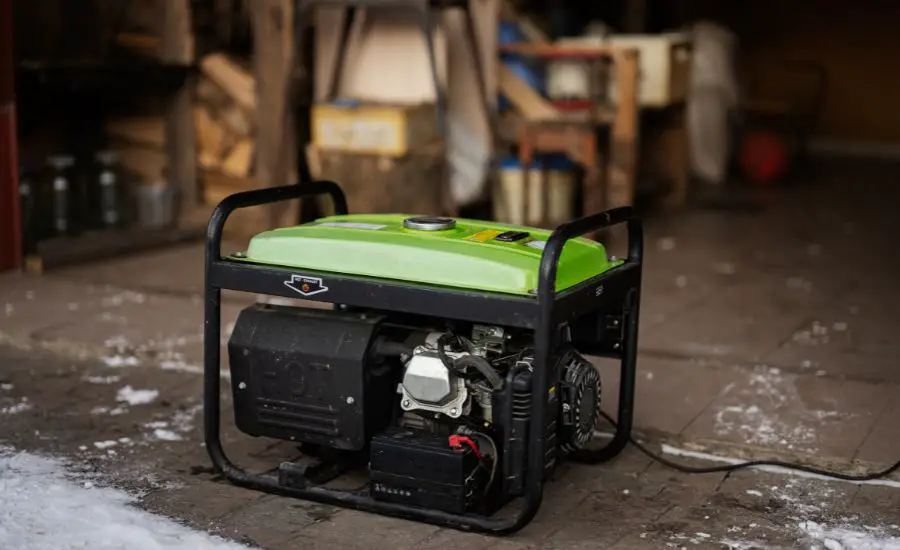
What is the weight of portable generators?
The weight of portable generators can differ based on their size and power capacity.
In general, smaller models weigh approximately 30 pounds (13.6 kilograms), while larger, more powerful ones can weigh over 200 pounds (90.7 kilograms).
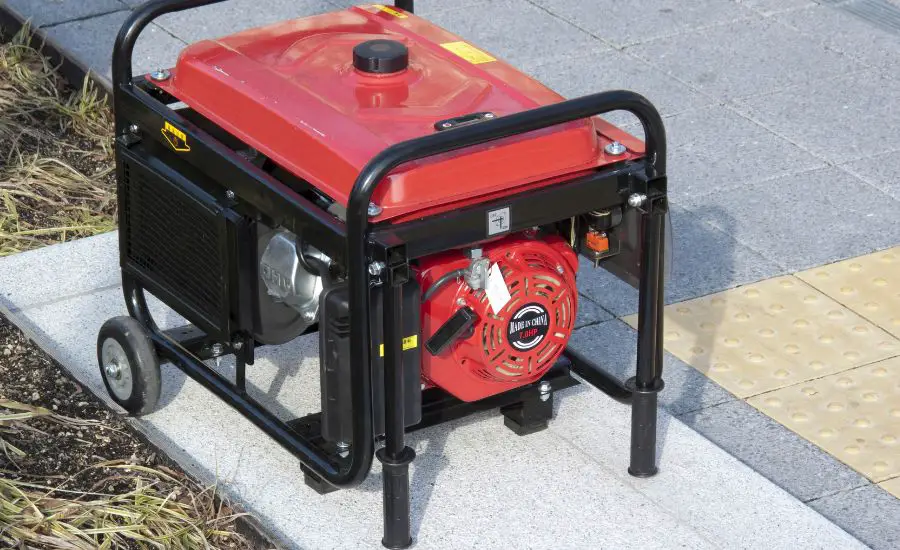
Categorizing portable generators according to weight sizes
A generator’s weight can be categorized into three sizes.
Lightweight models of portable generator
These lightest generators weigh less than 50 pounds and are designed for easy transportation and use on camping trips or other outdoor activities.
The lightest generators have a smaller power output and are typically fueled by gasoline or propane.

Medium-weight portable generator
Generators within the weight range of 50 to 150 pounds belong to the portable generators weigh category.
Mid-range portable generators offer more power output compared to lightweight generators and can be used for a wider range of applications, including powering small appliances and tools at construction sites or in RVs.
They are usually fueled by gasoline or diesel.
Heavyweight portable generator
Heavy portable generators weigh, which exceed 150 pounds, cater to extensive power requirements.
Large portable generators boast substantially more power output and are capable of supporting various appliances, and tools, or even acting as a backup power source for residences during blackouts.
These generators, commonly fueled by diesel or natural gas-powered, find frequent usage in construction sites, hospitals, and as emergency contingency mechanisms.
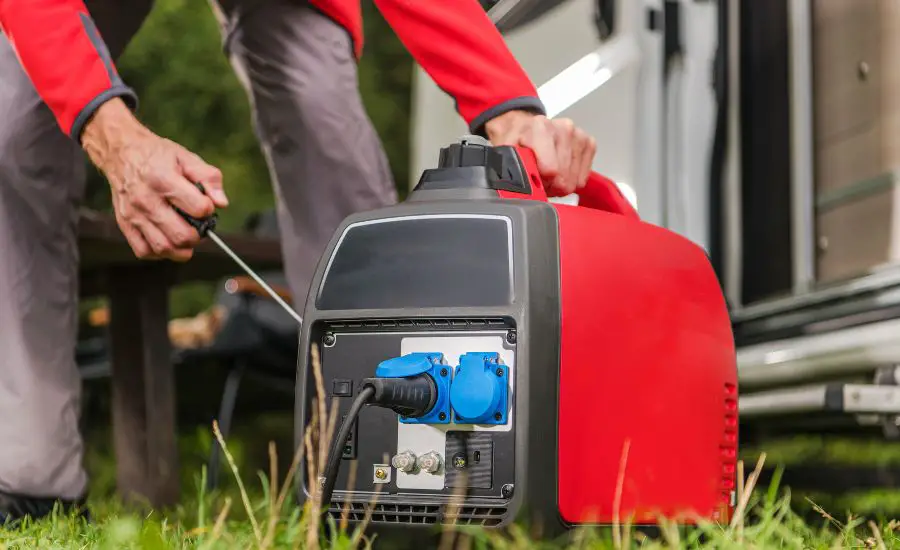
How much does a generator weigh?
Now we will look at different generator options.
Inverter generator
An inverter generator is a portable generator that transforms direct current (DC) electricity into alternating current (AC) electricity, generating consistent and clean power.
Inverter generators typically weigh between 30 and 100 pounds, depending on their size and power output.
It is important to consider the inverter generator weigh when selecting an inverter generator for portable use, as it may affect portability and ease of transportation.
Unlike conventional generators, which generate unregulated power at a fixed speed, inverter generators utilize advanced electronics to regulate power output.
This feature of an inverter generator makes it more fuel-efficient and capable of adjusting its speed according to the electrical load.
Portable generators have advanced technology that enables them to generate a power output with a pure sine wave, which closely resembles the electricity provided by a regular domestic socket.
This clean and stable power of an inverter generator is suitable for delicate electronic devices such as laptops, smartphones, and gaming consoles.

Due to this capability of inverter generators, inverter generators have gained popularity for outdoor activities like camping, tailgating, and other similar events.
Moreover, inverter generator tend to produce less noise compared to conventional generators as a result of their ability to operate at varying speeds.
These generators often incorporate noise mitigation features such as insulation, mufflers, and sound-absorbing compartments in order to minimize the level of noise generated while in use.
Portable generators come in different sizes and power capacities, catering to a range of needs.
From compact units ideal for charging small devices to larger models of portable generators that can provide electricity for RVs or homes in case of blackouts.
These generators are known for their portability, and they are often built with handles or wheels for effortless mobility.
In conclusion, portable inverter generator, or other inverter generators are favored for their dependable and effective power supply that produces clean energy, along with their convenience, compactness, and diminished noise, which makes them a popular option for various purposes, such as recreational activities and emergency situations.

Stationary generators
Generators, also referred to as standby generators, are pieces of equipment that offer an alternative electricity source in the event of power failures or disturbances in the primary power supply.
In contrast to other types, these generators are permanently installed in a fixed position, either outside or inside a structure.
Standby generator weigh depending on their power output and size. A typical residential standby generator may weigh anywhere from 300 to 1,000 pounds (136 to 454 kilograms).
However, larger commercial or industrial generators can weigh several thousand pounds (over a ton).
It’s important to consider the weight of a generator when determining where to install it, as it may require a stable and sturdy foundation to support its weight.
Usually fueled by natural gas for generators, propane, or diesel, these generators are engineered to swiftly activate when a power outage is detected.
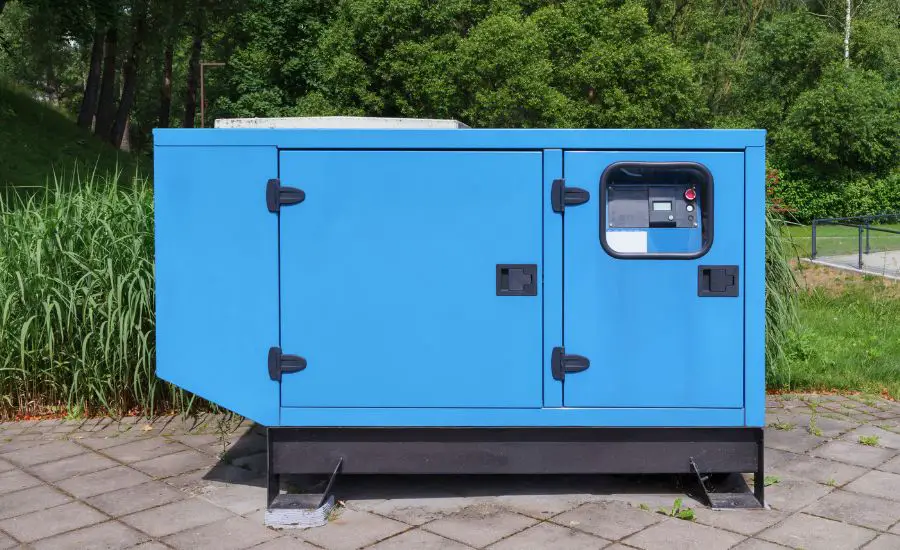
They are linked to the establishment’s electrical infrastructure and supply electricity to vital devices, machinery, and utilities such as lighting, refrigerators, HVAC systems, medical apparatus, and security systems.
Different buildings, including small homes and large commercial or industrial facilities with generators, have specific power needs that can be met by generators of various sizes and capacities.
This generator, unlike a portable generator, often comes with automatic transfer switches that smoothly shift the power load from the main power source to the generator and back when the electricity is restored.
In general, generators offer a dependable and practical option for sustaining power supply in the event of blackouts or emergencies. This guarantees the uninterrupted functioning of essential operations.
The backup power system of a stationary generator, unlike a portable generator, called a standby generator, activates automatically in case of a main power supply failure.
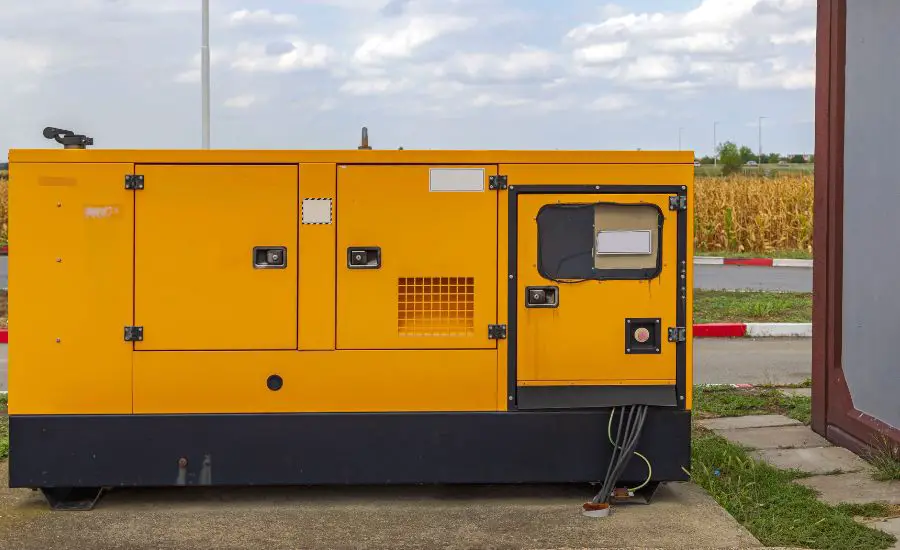
Usually located outside a structure, it is connected to the electrical system using a transfer switch.
Standby generators are frequently utilized in residences, commercial establishments, and other important facilities like hospitals, data centers, and essential services where an uninterrupted power supply is crucial.
Standby generators, fueled by either natural gas, propane, or diesel, are equipped with the capability to detect power interruptions and initiate an automatic startup in a matter of seconds.
This generator can be a dual-fuel generator, and it constantly monitors the electricity supply. As soon as there is a power outage, they promptly kick into action.
Depending on the power needs of the building or facility, standby generators are available in different sizes. When selecting a generator, fuel tank capacity is also important.
These generators are capable of supplying sufficient electricity to keep important appliances, HVAC systems, lights, and other essential equipment running in the event of a power outage.
Designed for quiet and efficient operation, standby generators offer a dependable backup power source for extended periods, whether it’s a short-term disruption or a long-lasting blackout.
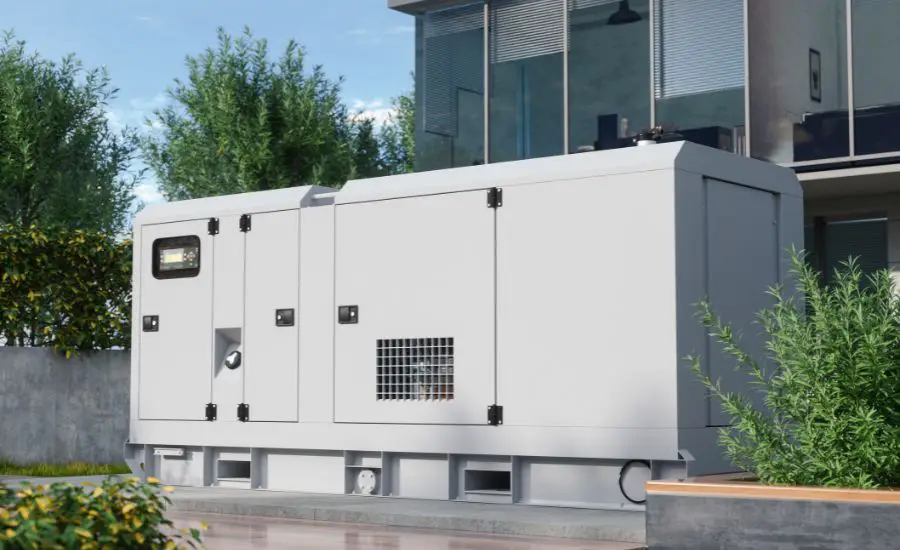
Industrial generators
Industrial generators are large-scale power generation units used in industries, factories, construction sites, and other commercial applications.
This portable generator is designed to produce electricity on a larger scale and provide a reliable and continuous power supply to run heavy-duty equipment and machinery.
Industrial generators typically have higher power capacities, ranging from several kilowatts to several megawatts.
This portable generator is often fueled by diesel, natural gas, propane, or gasoline, depending on the requirements and availability.
Some key features of an industrial portable generator include:
High power output
Industrial generators can produce power ranging from a few kilowatts to several megawatts, providing sufficient electricity to run heavy machinery, equipment, and multiple facilities simultaneously.
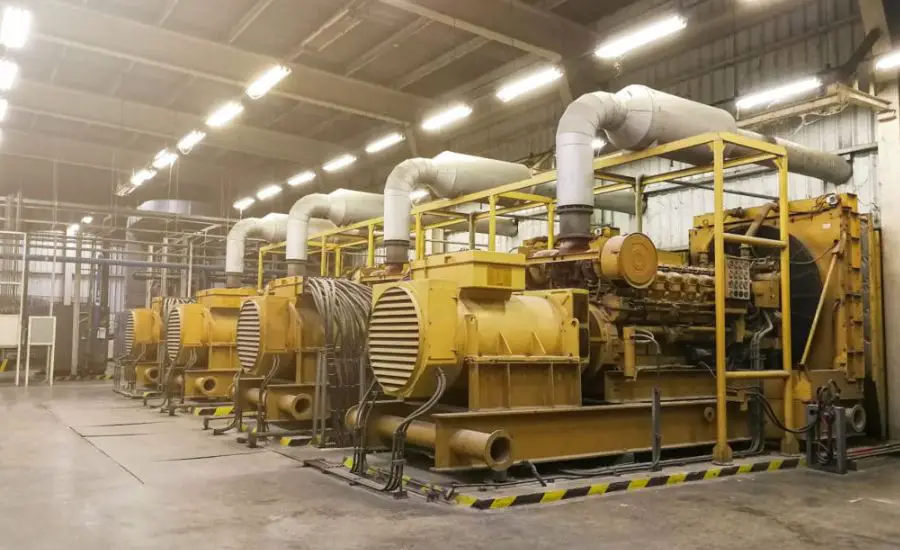
Durability and reliability
This portable generator is designed to operate in demanding industrial environments and provide continuous, reliable power for extended periods without frequent maintenance or downtime.
Automatic transfer switch (ATS)
This portable generator is often equipped with an ATS, which automatically senses power outages and switches the electrical load to the generator, ensuring a seamless transition and uninterrupted power supply.
Safety features of a portable inverter generator
Generators are built with safety mechanisms such as overload protection, high-temperature shutdown, low-oil pressure shutdown, and circuit breakers to protect both the generator and the connected equipment.
Fuel efficiency
Many industrial generators are designed to be fuel-efficient, optimizing fuel consumption and reducing operating costs. It can be gas-powered.
Noise reduction
Some industrial generators are equipped with soundproof enclosures or noise-reducing technology to minimize noise levels during operation, allowing them to be used in noise-sensitive areas.

What are the elements that influence the weight of a generator?
The weight of a generator is influenced by various elements, including:
Power output
The higher the power output or wattage of the generator, the heavier it tends to be.
This is because higher power output requires larger and more powerful components, such as a bigger engine and a larger alternator, which add to the weight.
Size and capacity
Generally, larger generators with larger fuel tanks and higher capacities to run for longer durations are heavier. This is because the larger size and capacity necessitate larger engines, heavier alternators, and bigger fuel tanks (including gas-powered ones).
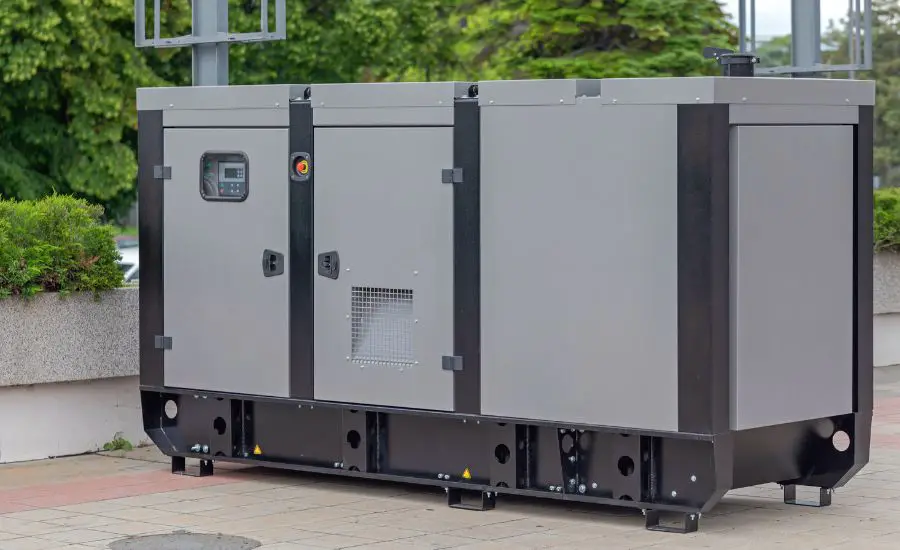
Engine type
The type of engine used in a generator also plays a role in its weight. Diesel engines are typically heavier than gasoline engines due to their more robust construction.
Construction materials
The materials used in the construction of the generator impact its weight. For example, generators made with heavy-duty metal components, like cast iron or steel, tend to be heavier than those made with lighter materials, such as aluminum.
Additional features
Additional features like electric starters, wheels, handles, and built-in fuel tanks can add weight to the generator.
Accessories and attachments
The attachment of additional accessories such as extended fuel tanks, soundproof enclosures, or wheel kits can increase the weight of a generator.
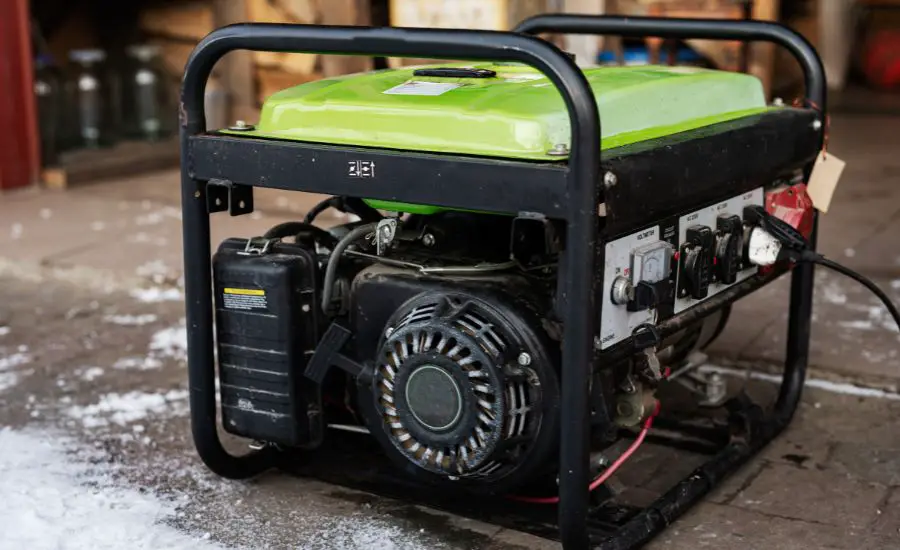
FAQ
The generator weight of a 5500-watt generator can vary depending on the specific model and brand.
On average, a 5500-watt generator weighs between 150 and 200 pounds (68 and 91 kilograms).
However, the generator’s weight recommended checking the specifications of the particular generator model to get an accurate weight measurement.
The portable generator weight can vary depending on its size, capacity, and features.
On average, a portable generator’s weight between 30 pounds (13.6 kg) and 200 pounds (90.7 kg).
However, there are lighter options available, such as inverter generators, with the generator’s weight starting at around 20 pounds (9 kilograms), as well as heavier industrial-grade models weighing several hundred pounds.
Therefore, it’s important to consider the specific requirements and intended use when selecting a portable generator.
The electric generator weight can vary depending on its size, power output, and design.
Small portable generators typically weigh between 30 and 100 pounds (approximately 14 to 45 kilograms for portable generators), while larger standby generators can weigh several hundred pounds to over a thousand pounds (approximately 450 to 900+ kilograms). It works with electrical energy.
The weight of a 2500 W generator can vary depending on the brand and model. However, on average, a 2500-watt generator weighs approximately 60 to 80 pounds (27 to 36 kilograms).
Conclusions
In the article, we answered the question “How much does a generator weigh.”
Of course, the weight depends on the material, size, and generator brand.
Lighter generators have a smaller design and are compact.
Average-weight generators are more widely used in everyday life.
But if the production is large-scale, then you will need a huge generator with a lot of weight.
I hope the article was useful and you enjoyed reading it!

